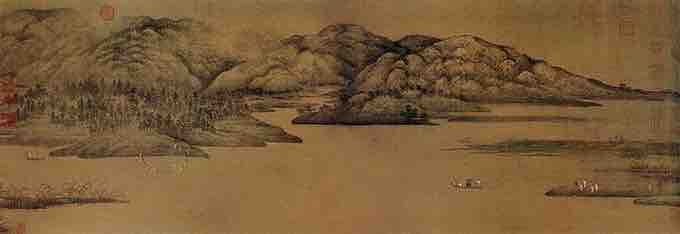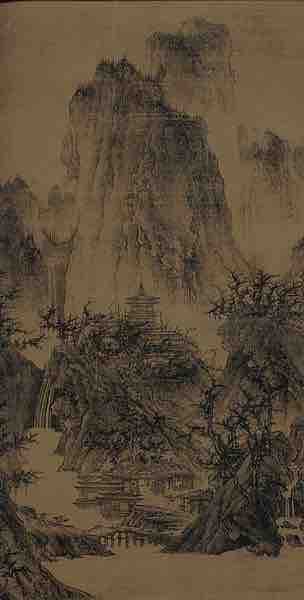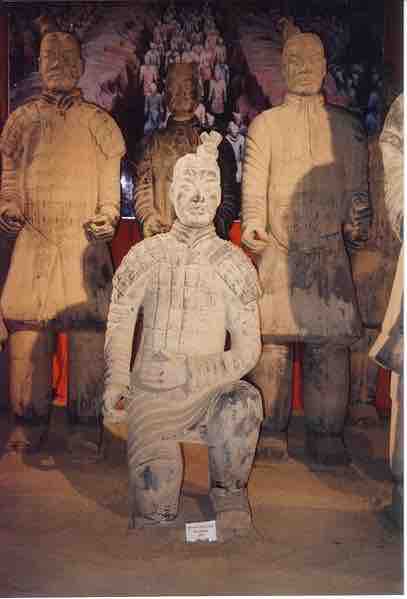Overview: Art in China
In China, common names for the country include Zhōngguó (中) and Zhōnghuá (中), referring to the group of states in the central plain. It was only in the 19th century that the term literally meaning "Middle Kingdom" emerged as the formal name of the country. The Chinese people were not unique in regarding their country as "central", as many civilizations have had the same view over time.
Chinese art has arguably the oldest continuous tradition in the world, and it is marked by an unusual degree of continuity within, and consciousness of, that tradition, lacking an equivalent to the Western collapse and gradual recovery of classical styles. The decorative arts are extremely important in Chinese art, and much of the finest work was produced in large workshops or factories by essentially unknown artists. Much of the best work in ceramics, textiles, and other techniques was produced over a long period by the various Imperial factories or workshops, which—along with being used by the court—was distributed internally and abroad on a huge scale to demonstrate the wealth and power of the Emperors. In contrast, the tradition of ink wash painting developed aesthetic values depending on the individual imagination of the artist, in ways that are similar to those of the West but long pre-dated their development there.
Painting
Traditional painting involves essentially the same techniques as calligraphy; it is done with a brush dipped in black or colored ink and painted on paper or silk. The finished work can be mounted on hanging scrolls or handscrolls; traditional painting can also be done on album sheets, walls, lacquerware, folding screens, and other media.
Techniques
The two main techniques in Chinese painting are Gong-bi (meaning "meticulous" and using highly detailed brushstrokes that delimit details very precisely) and ink and wash painting (also loosely termed watercolor or brush painting). Artists from the Han (202 BCE) to the Tang (618–906 CE) dynasties primarily painted the human figure. Much of what is known of early Chinese figure painting comes from burial sites, where paintings were preserved on silk banners, lacquered objects, and tomb walls. Many early tomb paintings were meant to protect the dead or help their souls get to paradise; others illustrated the teachings of Confucius or showed scenes of daily life.
The time from the Five Dynasties period to the Northern Song period (907–1128 CE) is known as the "Great age of Chinese landscape". In the north, artists such as Jing Hao, Li Cheng , Fan Kuan, and Guo Xi painted pictures of towering mountains, using strong black lines, ink wash, and sharp, dotted brushstrokes to suggest rough stone. In the south, Dong Yuan, Juran, and other artists painted the rolling hills and rivers of their native countryside in peaceful scenes done with softer, rubbed brushwork. These two kinds of scenes and techniques became the classical styles of Chinese landscape painting.

Dong Yuan, Xiao and Xiang Rivers. 10th century
Dong Yuan painted the rolling hills and rivers of his native countryside using soft, rubbed brushwork.

A Solitary Temple amid Clearing Peaks (晴), Li Cheng (c. 919 - c. 967 CE)
Li Cheng was among the great landscape painters from northern China.
Sculpture
Chinese ritual bronzes from the Shang and Western Zhou Dynasties have exerted a continuing influence over Chinese art. Many are cast with complex patterned and zoomorphic decoration. The spectacular Terracotta Army was assembled for the tomb of Qin Shi Huang, the first emperor of a unified China from 221–210 BCE, as a means of enabling the deceased to enjoy the same lifestyle in the afterlife. Smaller figures in pottery or wood were placed in tombs for many centuries afterwards, reaching a peak of quality in the Tang Dynasty.

Crossbow men from the Terracotta Army, interred by 210 BCE, Qin Dynasty
The spectacular Terracotta Army was assembled for the tomb of Qin Shi Huang, the first emperor of a unified China from 221–210 BCE.
Native Chinese religions do not typically use cult images of deities, and large religious sculptures are nearly all Buddhist, dating mostly from the 4th to the 14th century CE and arriving via the Silk Road. Imperial tombs have spectacular avenues of approach lined with real and mythological animals on a scale matching Egypt, and smaller versions decorate temples and palaces. Small Buddhist figures and groups were produced to a very high quality in a range of media, as was relief decoration of all sorts of objects, especially in metalwork and jade.
Pottery
Chinese ceramic ware shows a continuous development since the pre-dynastic periods and is one of the most significant forms of Chinese art. China is richly endowed with the raw materials needed for making ceramics, and works range from bricks and tiles to hand-built pottery vessels fired in bonfires or kilns and the sophisticated Chinese porcelains made for the imperial court. Most later Chinese ceramics, even of the finest quality, were made on an industrial scale; thus very few individual potters are known.
Decorative Arts
A wide range of valuable materials were worked and decorated with great skill for a range of uses or displays. Chinese jade was attributed with magical powers, and a range of objects and small sculptures were often carved in jade. Bronze, gold, silver, rhinoceros horn, Chinese silk, ivory, lacquer, cloisonne enamel, and many other materials had specialist artists working in them.